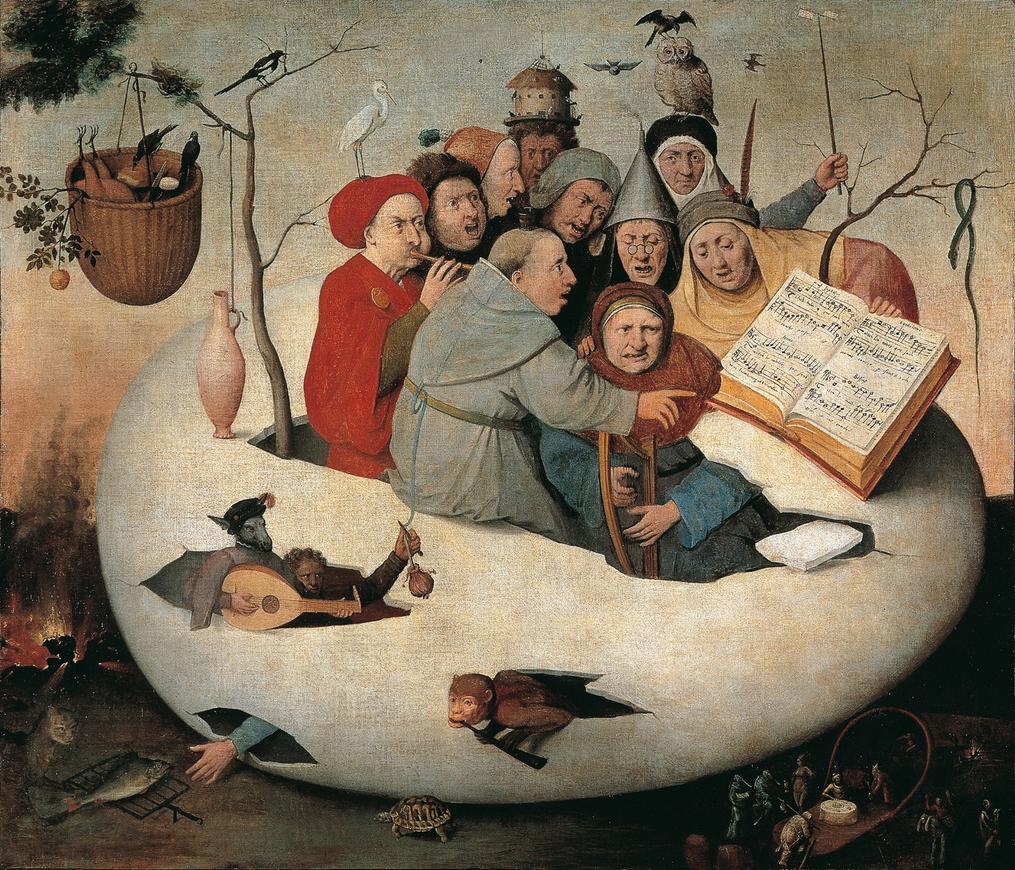This painting recalls a theme known since the end of the XVth century Europe: the ship of fools. It is based upon a text written by a poet named Sébastien Brant. It tells the story of the voyage of some dysfunctional characters sitting aboard a craft, the ship. The painter Jérôme Bosch was often inspired by this story, so much so that Le Concert dans l’œuf has long been attributed to him.
However, it is known today that the work is later... Indeed, the song that appears on the musical score was first published in 1549, 33 years after the painter’s death!
In the ship of fools, each character represents a type of madness: heresy, stupidity, greed... Look for example at the monk, who beats out a rhythm and exhorts his companions to follow the score of a bawdy song. He is so focused on music that he does not notice the little character cutting the string that holds his purse!
A character next to him is wearing an upturned funnel on his head. It is still today a symbol of madness. Originally, the funnel symbolised the transmission of ideas, but if it was upside down, it meant ignorance and insanity!
Inventory number: P.816
Detail : Have you noticed the fish at the bottom left? It is coveted by a cat and a hand reaches out for it from the egg. The fish is a very ancient symbol of Christ. It appears as the symbol of reason in the midst of this apparent chaos!

This painting recalls a theme known since the end of the XVth century Europe: the ship of fools. It is based upon a text written by a poet named Sébastien Brant. It tells the story of the voyage of some dysfunctional characters sitting aboard a craft, the ship. The painter Jérôme Bosch was often inspired by this story, so much so that Le Concert dans l’œuf has long been attributed to him.
However, it is known today that the work is later... Indeed, the song that appears on the musical score was first published in 1549, 33 years after the painter’s death!
In the ship of fools, each character represents a type of madness: heresy, stupidity, greed... Look for example at the monk, who beats out a rhythm and exhorts his companions to follow the score of a bawdy song. He is so focused on music that he does not notice the little character cutting the string that holds his purse!
A character next to him is wearing an upturned funnel on his head. It is still today a symbol of madness. Originally, the funnel symbolised the transmission of ideas, but if it was upside down, it meant ignorance and insanity!
Inventory number: P.816
Detail : Have you noticed the fish at the bottom left? It is coveted by a cat and a hand reaches out for it from the egg. The fish is a very ancient symbol of Christ. It appears as the symbol of reason in the midst of this apparent chaos!